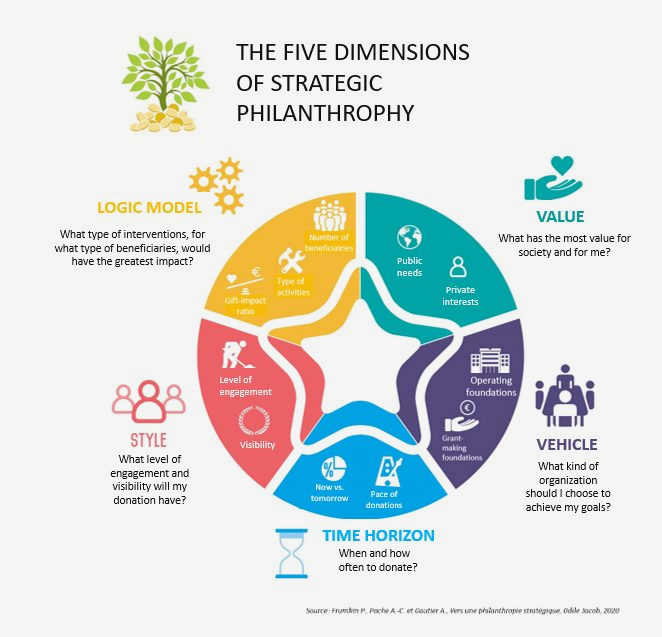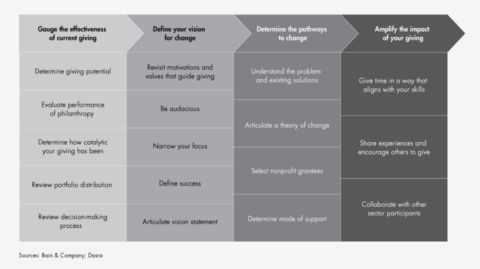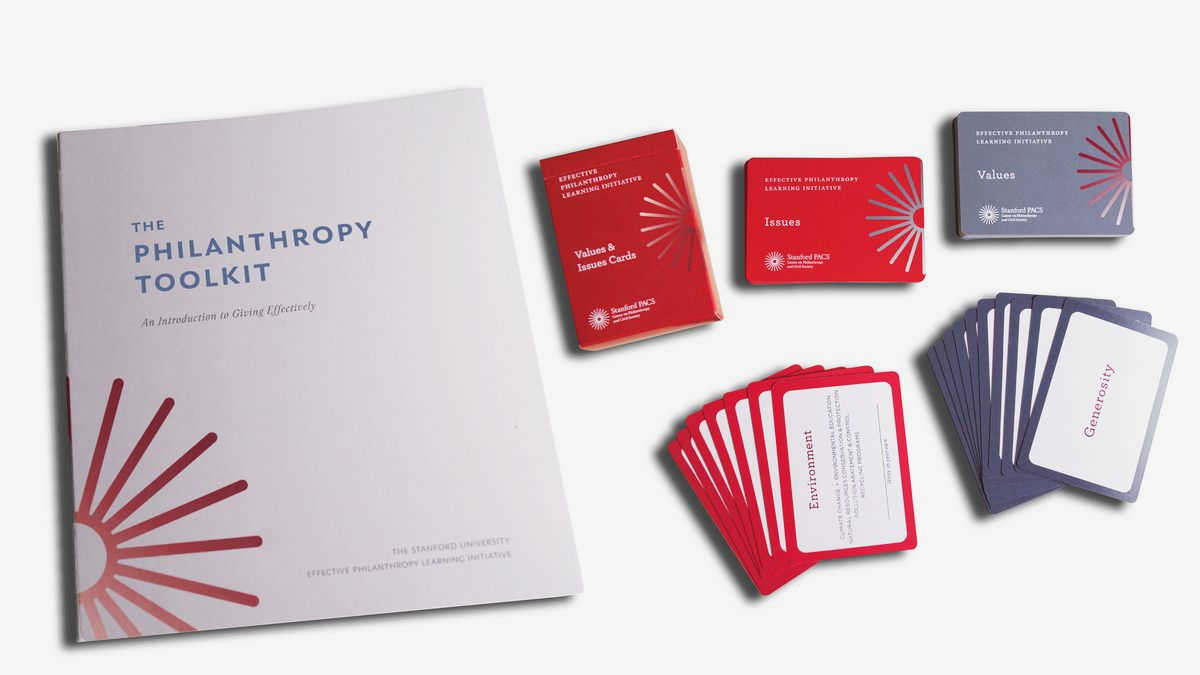Philanthropy has the power to make a profound impact on society. By strategically directing resources towards organizations and initiatives that are dedicated to creating positive change, individuals and foundations can play a crucial role in supporting and strengthening civil society. However, in order to maximize the impact of philanthropic efforts, it is important to employ effective strategies that ensure resources are used efficiently and effectively.
One key strategy for maximizing philanthropic impact is to identify and support innovative and effective organizations and initiatives. It is important to conduct thorough research and due diligence to identify organizations that have a proven track record of success and are making a tangible difference in their field. By supporting these organizations, philanthropists can ensure that their resources are being directed towards initiatives that have the potential to create long-term, sustainable change.
Another strategy for maximizing philanthropic impact is to collaborate and coordinate efforts. By partnering with other philanthropic organizations and stakeholders, individuals and foundations can pool their resources and expertise to tackle complex social issues. Collaboration allows for a more comprehensive and holistic approach, as well as the opportunity to learn from the experiences and knowledge of others. Working together, philanthropic actors can leverage their collective strength to achieve greater impact and bring about systemic change.
Transparency and accountability are crucial elements for maximizing philanthropic impact. Donors should be transparent about their decision-making process and funding priorities, as well as provide regular updates on the progress and outcomes of their supported initiatives. By holding themselves accountable and providing clear and measurable goals, philanthropists can ensure that their resources are being used effectively and are making a meaningful difference.
Lastly, it’s important to invest in capacity building and long-term sustainability. Philanthropic efforts should not only focus on immediate needs, but also on building the capacity and resilience of organizations and communities. By providing support and resources for capacity building, such as training, mentorship, and infrastructure development, philanthropists can help ensure that organizations have the necessary tools and resources to continue their work in the long run.
In conclusion, maximizing philanthropic impact requires strategic thinking, collaboration, transparency, and a focus on long-term sustainability. By employing these strategies, individuals and foundations can make a lasting and meaningful difference in supporting and strengthening civil society.
Strategies for Supporting Civil Society
In order to maximize your philanthropic impact and strengthen civil society, it is important to consider a variety of strategies. These strategies can help to ensure that your support is targeted and effective, and that it helps to build resilient and sustainable civil society organizations.
1. Capacity Building:
A key strategy for supporting civil society is to invest in capacity building initiatives. This may involve providing training, mentorship, and technical assistance to civil society organizations, helping them to develop their skills, knowledge, and resources. By strengthening the capacity of these organizations, you can help them become more effective in their work and better able to address the needs of their communities.
2. Advocacy and Policy Influence:
Supporting civil society in their advocacy and policy influence efforts can have a significant impact on strengthening civil society. This can involve funding organizations that engage in advocacy work, supporting research and evidence-based policy initiatives, and facilitating networking and collaboration among civil society organizations. By investing in these efforts, you can help to amplify the voices of civil society and ensure that their perspectives are taken into account by policymakers.
3. Promoting Collaboration and Partnership:
Encouraging collaboration and partnership among civil society organizations is another effective strategy for supporting civil society. This can involve convening meetings and workshops where organizations can share best practices and learn from one another, facilitating networks and coalitions, and supporting collaborative projects and initiatives. By promoting collaboration, you can help civil society organizations to leverage their resources and expertise, and collectively address complex social issues.
4. Financial Sustainability:
Ensuring the financial sustainability of civil society organizations is crucial for their long-term impact. This can involve providing grants and funding to help organizations cover their operational costs, as well as supporting their efforts to diversify their funding sources. Additionally, fostering financial literacy and organizational sustainability planning can help organizations become more resilient and able to weather potential challenges.
5. Monitoring and Evaluation:
Monitoring and evaluation is essential for assessing the impact and effectiveness of your philanthropic support. By investing in robust monitoring and evaluation systems, you can collect data and evidence to inform decision-making and improve your strategies. This can involve supporting organizations in developing monitoring and evaluation frameworks, providing technical assistance, and promoting learning and knowledge sharing within the sector.
6. Collaboration with Other Funders:
Collaborating with other funders is a powerful strategy for supporting civil society. By pooling resources and coordinating efforts, funders can have a greater impact and avoid duplication of efforts. This can involve participating in funder collaboratives, sharing knowledge and expertise, and aligning funding priorities and strategies. By working together, funders can effectively support civil society organizations and contribute to positive and lasting change.
Effective Grant-Making Techniques
When it comes to maximizing your philanthropic impact, effective grant-making techniques can make all the difference. By carefully considering the following strategies, you can ensure that your grants are impactful, well-targeted, and ultimately help strengthen civil society.
1. Prioritize Funding for High-Impact Projects
One of the most effective grant-making techniques is to prioritize funding for projects that have the potential to make a significant impact. Consider supporting initiatives that align with your organization’s mission and have a clear plan for achieving their goals. By focusing your resources on high-impact projects, you can maximize the positive change your grants can bring about.
2. Foster Collaboration and Partnerships
Collaboration and partnerships can significantly amplify the impact of your grants. Look for opportunities to support projects that encourage collaboration between different organizations, sectors, and stakeholders. By facilitating partnerships, you can help foster innovative solutions, leverage additional resources, and create a more sustainable impact on civil society.

3. Provide Capacity-Building Support
Effective grant-making includes not only providing financial support but also offering capacity-building resources to help organizations thrive. Consider funding projects that provide training, technical assistance, mentorship, or infrastructure support. By investing in the capacity of organizations, you can strengthen civil society as a whole and enhance the long-term sustainability of the projects you support.
4. Embrace Innovation and Risk-Taking
To maximize your impact, be willing to embrace innovation and support projects that take calculated risks. Encourage organizations to think creatively, test new approaches, and learn from failures. By supporting innovative ideas and taking risks, you can unlock new solutions and contribute to the overall growth and sustainability of civil society.
- 5. Strengthen Monitoring and Evaluation Practices
Lastly, to ensure the effectiveness of your grants, it is crucial to strengthen monitoring and evaluation practices. Encourage grantee organizations to develop clear indicators and measurement systems to track their progress and outcomes. By monitoring and evaluating the impact of your grants, you can learn from successes and failures, adapt your strategies, and continuously improve your philanthropic efforts in supporting civil society.
Collaborating with Nonprofit Organizations
When it comes to maximizing your philanthropic impact, collaborating with nonprofit organizations can be a valuable strategy. Nonprofits are dedicated to addressing various social issues and have the expertise and experience to make a lasting difference in their respective fields.
Identifying the right nonprofit partners:
It is crucial to identify nonprofit organizations that align with your philanthropic goals and values. Consider the mission and vision of the organization, as well as their track record and impact in the community. Look for organizations that have a strong reputation, a history of successful projects, and a clear plan for how they will use the resources you provide.
Evaluating the nonprofit’s capacity:
Before collaborating with a nonprofit organization, it is essential to evaluate their capacity to effectively carry out the desired project or program. Assess their financial stability, leadership team, and operational infrastructure. This evaluation will help ensure that your resources are being utilized efficiently and effectively.
Building a partnership:
Collaboration with nonprofit organizations should be viewed as a partnership, rather than simply a funder-grantee relationship. Engage in open and transparent communication, and work together to define shared goals and objectives. This collaborative approach fosters mutual accountability and increases the likelihood of long-term success.
Providing additional support:
In addition to financial resources, consider providing additional support to nonprofit partners. This can include offering expertise, networking opportunities, or capacity-building grants to strengthen their organizational capacity. By investing in the overall growth and sustainability of the nonprofit, you can further maximize the impact of your philanthropy.
Evaluating and learning from the collaboration:
Regularly evaluate the progress and impact of your collaboration with nonprofit organizations. Establish measurable outcomes and regularly collect data to assess the effectiveness of the partnership. Use this information to learn and make necessary adjustments to improve future collaborations and increase your overall philanthropic impact.
Fostering Social Entrepreneurship
Social entrepreneurship is a growing movement that aims to address social and environmental challenges by applying innovative business solutions. It involves individuals and organizations who prioritize the well-being of people and the planet, while also aiming to generate sustainable profits.
There are several ways to foster social entrepreneurship and support these individuals and organizations:
1. Providing Access to Resources and Funding:
One key challenge for social entrepreneurs is accessing the necessary financial resources to start and scale their ventures. Providing grants, loans, and seed funding can help bridge this gap and enable social entrepreneurs to bring their ideas to life.
2. Offering Training and Mentorship:
Many aspiring social entrepreneurs may lack the necessary business skills or knowledge to turn their ideas into successful ventures. Offering training programs and mentorship opportunities can help them build the skills and networks needed to navigate the entrepreneurial landscape.
3. Creating Supportive Networks:
Building a supportive community of like-minded individuals and organizations can be invaluable for social entrepreneurs. This network can provide a platform for collaboration, knowledge sharing, and emotional support, helping social entrepreneurs overcome challenges and learn from each other’s experiences.

4. Fostering Collaboration:
Collaboration between social entrepreneurs, nonprofits, government agencies, and corporate entities can lead to more effective solutions to complex social issues. Facilitating partnerships and encouraging collaboration can help leverage each stakeholder’s strengths and resources to create greater impact.
5. Recognizing and Celebrating Successes:
Recognizing and celebrating the achievements of social entrepreneurs can help inspire others to follow in their footsteps. Establishing awards, competitions, and other recognition programs can provide a platform for showcasing success stories and encouraging further innovation in the field of social entrepreneurship.
In conclusion, fostering social entrepreneurship requires a multi-faceted approach that provides access to resources, knowledge, networks, and support. By creating an enabling environment for social entrepreneurs to thrive, we can strengthen civil society and address pressing social and environmental challenges.
Strengthening Grassroots Movements
Grassroots movements are an essential part of civil society, representing the collective power of individuals and communities to drive social change from the ground up. These movements are often driven by passionate individuals who are deeply connected to the issues they are fighting for. However, they often face numerous challenges that can hinder their effectiveness and sustainability.
One key strategy for strengthening grassroots movements is to provide them with the necessary resources and support to build capacity. This can involve offering training and mentorship programs, providing financial grants or resources, and connecting them with relevant networks and organizations. By investing in the development of grassroots leaders and organizations, we can empower them to make a greater impact and ensure their long-term success.

An important aspect of strengthening grassroots movements is to foster collaboration and partnerships among different organizations and stakeholders. By bringing together individuals and groups with shared goals and values, we can create a collective force that is more powerful than the sum of its parts. This can involve facilitating dialogue, sharing best practices, and encouraging cooperation on common issues. Collaboration can help grassroots movements amplify their voices and increase their influence on policy and decision-making processes.
Another effective strategy for strengthening grassroots movements is to prioritize inclusivity and diversity within their ranks. By ensuring that these movements are representative of the communities they serve, we can enhance their legitimacy and effectiveness. This can involve actively engaging marginalized groups, promoting gender and racial equality, and creating platforms for different voices to be heard. Inclusivity and diversity can bring new perspectives and ideas, leading to more innovative and sustainable solutions.
In conclusion, strengthening grassroots movements is crucial for supporting and strengthening civil society. By providing resources and support, fostering collaboration, and promoting inclusivity and diversity, we can empower grassroots leaders and organizations to drive meaningful social change. Together, we can create a more equitable and just society for all.

Engaging and Empowering Youth
Engaging and empowering youth is crucial for the future of civil society. By involving young people in philanthropic efforts, we can harness their energy, creativity, and passion to bring about positive change in their communities.
One effective way to engage youth is through mentorship programs. Pairing young individuals with experienced professionals in their fields of interest allows them to learn from real-life experiences and gain valuable insights. These mentorship programs can not only help youth develop important skills and knowledge but also instill in them a sense of purpose and responsibility towards their community.
Another strategy to empower youth is by creating platforms for their voices to be heard. Through youth-led initiatives and projects, young people can express their opinions and ideas, and take ownership of the causes they care about. This can be done through youth councils, forums, or even social media campaigns, which allow for wider reach and impact.
It is also important to provide youth with opportunities for leadership and decision-making. By involving young individuals in the governance and decision-making processes of civil society organizations, we can ensure that their perspectives are valued and that their ideas are taken seriously. This can help foster a sense of ownership and commitment among youth, encouraging them to contribute actively to the betterment of society.
Furthermore, investing in youth education and skill-building programs can help empower them to become active contributors to civil society. By providing access to quality education, vocational training, and entrepreneurship opportunities, we can equip young individuals with the tools they need to succeed and make a difference. This can help break the cycle of poverty and inequality, and pave the way for a stronger and more inclusive civil society.
All in all, youth engagement and empowerment are vital for the future of civil society. By involving and investing in young individuals, we can ensure the continuity of positive change and build a stronger, more resilient society for future generations.
Investing in Capacity Building
Investing in capacity building is a crucial strategy for philanthropic organizations looking to maximize their impact in supporting and strengthening civil society. Capacity building refers to the process of developing and strengthening the skills, resources, and capabilities of individuals, organizations, and communities. By investing in capacity building initiatives, philanthropic organizations can help empower civil society organizations to effectively address the social, economic, and political challenges they face.
One key aspect of capacity building is providing training and education. Philanthropic organizations can fund programs that offer workshops, seminars, and training sessions to enhance the knowledge and skills of civil society organizations. These programs can cover a wide range of topics, such as organizational management, fundraising, advocacy, and program implementation. By equipping civil society organizations with the necessary knowledge and skills, philanthropic organizations can contribute to their long-term sustainability and effectiveness.
Another important element of capacity building is providing financial support. Philanthropic organizations can offer grants or fellowships to civil society organizations, enabling them to expand their programs, hire qualified staff, and invest in infrastructure. By providing financial resources, philanthropic organizations can help build the financial resilience of civil society organizations, allowing them to better navigate challenges and seize opportunities. Additionally, philanthropic organizations can offer technical assistance and mentorship to help civil society organizations improve their financial management practices.
In addition to training and financial support, philanthropic organizations can also invest in the development of networks and collaborations. By facilitating connections between civil society organizations, philanthropic organizations can foster knowledge sharing, mutually beneficial partnerships, and collective action. These networks and collaborations can lead to increased coordination and cooperation, ultimately strengthening the overall impact of civil society organizations in addressing societal challenges.
Overall, investing in capacity building is a strategic approach for philanthropic organizations to maximize their impact in supporting and strengthening civil society. By providing training and education, financial support, and facilitating networks and collaborations, philanthropic organizations can empower civil society organizations to effectively address societal challenges and create positive change.
Promoting Advocacy and Public Policy
Advocacy and public policy play a crucial role in supporting and strengthening civil society. By promoting advocacy, individuals and organizations can have a significant impact on shaping public policies and influencing decision-making processes.
Advocacy efforts involve speaking out and raising awareness about specific issues. This can be done through various means, such as organizing campaigns, writing letters to policymakers, or using social media to amplify messages. Advocates often collaborate with like-minded individuals and organizations to form coalitions, increasing their collective influence and reach.
An essential aspect of promoting advocacy is conducting research to gather evidence and data that support the cause. This research helps to provide a solid foundation for advocating for change and influencing public policies. It is crucial to present this information in a clear and accessible manner to effectively communicate the need for action.
Public policy, on the other hand, refers to the decisions and actions taken by governments to address societal issues. By engaging with policymakers and participating in public consultations, advocates can contribute to the development and implementation of policies that align with their objectives.
Advocacy efforts may focus on a wide range of public policy areas, such as human rights, education, healthcare, or environmental protection. It is essential for advocates to have a deep understanding of the issues at hand, as well as the political and social context surrounding them. This knowledge allows them to develop well-informed strategies and tailor their advocacy efforts to the specific needs of their cause.
Overall, promoting advocacy and engaging with public policy processes are instrumental in driving positive change within civil society. By actively participating in advocacy campaigns, conducting research, and collaborating with relevant stakeholders, individuals and organizations can help shape policies that address societal needs and improve the well-being of communities.
Leveraging Technology for Social Impact
Technology has become an invaluable tool in maximizing social impact and driving positive change in civil society. With the advancements in digital technology, organizations have the opportunity to reach a wider audience, streamline their operations, and scale their impact. One way technology is being leveraged for social impact is through the use of innovative communication channels.
Innovative Communication Channels
The rise of social media platforms, such as Facebook, Twitter, and Instagram, has transformed the way organizations communicate with their stakeholders. These platforms provide a unique opportunity to engage with a diverse audience, share impactful stories, and mobilize support for social causes. By leveraging technology, organizations can amplify their messaging and reach individuals who may not have otherwise been aware of their work.
Data Analytics and Insights
Another way technology is revolutionizing social impact is through the use of data analytics and insights. Nonprofit organizations can leverage data to better understand their target audience, identify trends, and measure the impact of their initiatives. By analyzing data, organizations can make informed decisions and allocate resources more effectively, ultimately maximizing their social impact.
Collaborative Platforms
Collaborative platforms, such as online crowdfunding websites and crowdmapping tools, have also emerged as powerful tools for social impact. These platforms enable individuals and organizations to connect, share resources, and collaborate on projects that address social issues. By leveraging technology, individuals can contribute to causes they care about and make a tangible impact on civil society.
Overall, technology is a powerful tool that can be leveraged to maximize social impact. Through innovative communication channels, data analytics, and collaborative platforms, organizations and individuals can drive positive change in civil society and create a lasting impact on the world.
Encouraging Cross-Sector Partnerships
Promoting Collaboration
Encouraging cross-sector partnerships plays a crucial role in maximizing philanthropic impact. By bringing together organizations from different sectors such as government, non-profits, and businesses, we can leverage their unique expertise and resources to address complex societal challenges more effectively.

For example, a non-profit organization focused on education can partner with a technology company to develop innovative learning tools and programs that reach a wider audience. This collaboration allows the non-profit to access resources and expertise in technology, while the technology company can fulfill its corporate social responsibility by contributing to educational initiatives.
Building Trust and Communication
Building trust and open lines of communication are essential for successful cross-sector partnerships. Establishing a shared vision, clear goals, and effective communication channels can facilitate collaboration and streamline decision-making processes.
Regular meetings, joint workshops, and open dialogue between partners can help identify common areas of interest and potential opportunities for collaboration. Transparent communication channels ensure that all parties are informed and involved in the decision-making process, fostering a sense of ownership and commitment to the partnership.
Creating Incentives
Creating incentives for cross-sector partnerships can encourage organizations to engage in collaborative efforts. Public recognition, financial incentives, and knowledge-sharing platforms can motivate organizations to work together and contribute to strengthening civil society.
For instance, a government agency can offer tax incentives or grants to businesses that actively partner with non-profit organizations to address societal challenges. This not only provides financial support to the partners but also increases their visibility and credibility in the community.
Evaluating Impact
Evaluating the impact of cross-sector partnerships is crucial to ensuring their effectiveness and sustainability. Regular monitoring and evaluation allow partners to assess the progress of their collaborative efforts, identify areas for improvement, and make informed decisions for future actions.
Establishing indicators and metrics to measure the impact of the partnership can provide valuable insights and evidence-based recommendations for scaling up successful initiatives and modifying ineffective strategies.
In conclusion, encouraging cross-sector partnerships is vital for maximizing philanthropic impact. By promoting collaboration, building trust and communication, creating incentives, and evaluating impact, we can harness the collective power of different sectors to address complex societal challenges and strengthen civil society.
Measuring and Evaluating Philanthropic Outcomes
Measuring and evaluating philanthropic outcomes is essential for assessing the impact of philanthropic efforts and for making informed decisions about future giving. By gathering data and analyzing results, philanthropists can determine whether their interventions have achieved their desired outcomes and identify areas for improvement.
One approach to measuring philanthropic outcomes is through targeted evaluations. These evaluations involve setting clear goals and objectives at the outset of a project and then systematically collecting data to assess progress towards those goals. This can involve tracking indicators such as improved access to education, reduced poverty rates, or increased community engagement. Through rigorous data collection and analysis, philanthropists can determine the effectiveness of their interventions and make evidence-based decisions.
Another important aspect of measuring philanthropic outcomes is the use of impact metrics. Impact metrics provide a quantifiable measure of the social, economic, or environmental change generated by a philanthropic intervention. These metrics can include indicators such as the number of individuals served, the amount of funds leveraged, or the extent of policy changes achieved. By using impact metrics, philanthropists can assess the scale and magnitude of their impact, compare interventions across different contexts, and identify opportunities for scaling up successful interventions.
A comprehensive approach to measuring and evaluating philanthropic outcomes also involves considering unintended consequences or negative externalities. Philanthropists should be mindful of potential unintended negative impacts that their interventions may have on the communities they seek to help. By carefully monitoring and evaluating these unintended consequences, philanthropists can take corrective actions and avoid exacerbating existing social or economic inequalities.
Finally, transparency and accountability are key elements in measuring and evaluating philanthropic outcomes. Philanthropists should be proactive in sharing information about their interventions, the results achieved, and lessons learned. This can include publishing evaluations and reports, sharing data and findings with relevant stakeholders, and engaging in dialogue with the communities affected by their philanthropy. Through transparency and accountability, philanthropists can foster trust, learn from their experiences, and contribute to the broader knowledge base on effective philanthropic practices.





